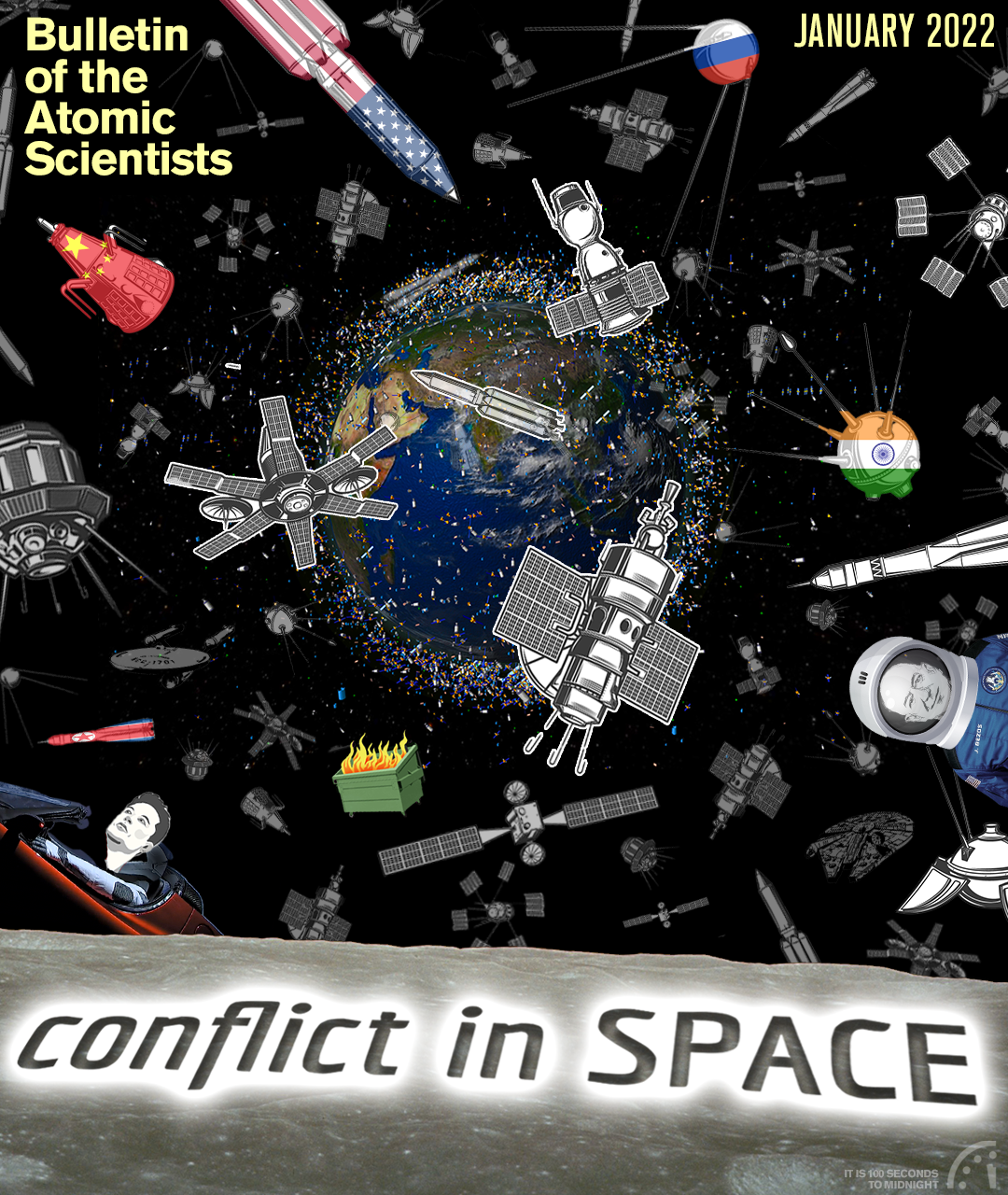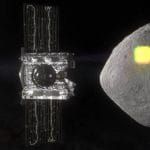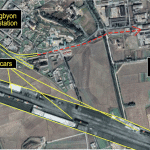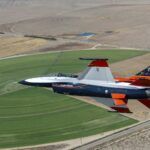A China-US war in space: The after-action report
By Henry Sokolski | January 17, 2022
A China-US war in space: The after-action report
By Henry Sokolski | January 17, 2022
Mention military space operations and most people, even sophisticates in Washington, conjure up images of Star Wars: Laser-powered firearms, star fighters and battleships, and cosmic fireball explosions that propel space rubble to infinity and beyond. What’s presumed is space combat waged between massive, opposed forces armed with dedicated military spacecraft equipped with an arsenal of space guns, zipping to points in space with light-warp acceleration. What’s expected is that one party will vanquish the other or (better) that they might come to their senses and strike some sort of Westphalian space compact.
Even the studied imagination of reality, though, reaches somewhat different conclusions. If one taps the nation’s leading space experts, as my center did, and games out the most likely near and mid-term threats the United States and its space-faring allies face, space blasters aren’t the worry. Instead, the headaches ahead are relatively slow-moving rendezvous robot satellites, ground-based electronic jammers, and cyber weapons and lasers designed to disable satellites without producing space debris.
Clear-cut, black-and-white-hat space combat is unlikely. Instead, many of the ground- and space-based threats Washington and its space allies face will be ostensibly “peaceful.” Laser satellite trackers, commercial space surveillance systems, space debris-removing satellites, and refueling spacecraft all will have and conduct legitimate civilian missions. Unfortunately, these same systems can be flipped to conduct anti-satellite missions, including damaging, de-fueling, and repositioning targeted satellites. In some cases, these systems may be owned and operated by private, commercial firms.
Even the initial military response to these threats will likely lack drama. Instead of death blasters, the preferred response to rendezvous spacecraft that attempt to de-fuel, disable, or reposition our key satellites will be to gently push such approaching spacecraft a safe distance away with “bodyguard” satellites. To pull off such feats, Washington will need the support of as many of its space-faring allies as it can get.
Finally, unless China, Russia, and America’s other space competitors throw in their towels, short-circuiting military competitions in space via diplomacy will be challenging, at best. Trust is low and likely to dip even further. Rules of the road and redlines for space behavior will be useful, but unless they are self-executing, such agreements will lack proper enforcement and could actually make matters worse.
None of these conclusions is intuitive and, in fact were not anticipated when my nonprofit tapped the expertise of current and former space officials and experts to conduct a month-long space war game.[1] Researched with the assistance of current and former senior State Department, NASA, intelligence, space industry, and Defense Department officials, the three-move game played over two weeks focused on a possible lead up to a Chinese commercial blockade of Taiwan. In the game, Beijing attempts to deter Japan and the United States from coming to Taipei’s aid by threatening and then actually attacking several US and Japanese satellite systems.
What was different about this game wasn’t that it was unclassified (although the findings of most military space games with participants with code word clearances have not been made public). It’s that the game covered much more than military acquisition and operational issues and included not just current and former senior officials who had special access clearances, but outside experts and entry-level Hill and executive branch staff that had few, if any, clearances at all. Finally, the game participants were not restricted to military space technicians but included regional and space diplomacy specialists as well as foreign and military policy generalists. Many of the participants had played in classified space war games before. Just as many had not.
This debrief reflects not only what happened during the game, but the game’s three preparatory meetings. Game participants represented the United States, the People’s Republic of China, and Japan and US Indo-Pacific allies. The first move was set in 2027. The second and third moves were set in 2029. In the first move, China initiated space control operations intended to weaken the resolve of US regional allies (e.g., Japan, South Korea, Australia) to oppose a Chinese economic exclusion zone enforcement effort (effectively an economic blockade, enforced by demanding tariffs for passage) directed against Taiwan.
Game format and scenario
Game participants were assigned to one of three teams: the United States, the People’s Republic of China, and Japan and regional allies (Australia, South Korea, Taiwan, and other nations in the region). The control center observed and conducted overall game administration.
Move one began in 2027, when participants engaged in operational space capabilities that were assumed to be in an experimental phase. Each team was provided a set of capabilities with which they could conduct space situational awareness efforts and offensive and defensive space control operations. Commercial assets resided in all orbits by 2027-2029, and teams were able to target these assets as desired or use these assets to support military missions.
Move two replayed move one, but in 2029, with each team having more operational capabilities in space. Finally, move three examined the long-term implications of the crisis. After move three, teams were asked two questions: What worked and what didn’t, and what new initiatives and capabilities might have made a decisive difference in the game’s outcome.
At the start of move one (2027), China had not put significant naval, air, or ground forces behind its enforcement of its declared Taiwan exclusive economic zone. China’s goal in implementing the Taiwan exclusive economic zone was not to starve the island, but to increase China’s political jurisdiction and control over its renegade province.
In this war game, China initiated space control operations in hopes of weakening US resolve and persuading American regional allies not to oppose China’s future economic zone enforcement effort against Taiwan. In this scenario, China had 10 rendezvous satellites that could serve as ASATS, and up to 17 ground-based laser systems that might be used for ASAT purposes.
The 10 service satellites’ commercial raison d’etre was to rendezvous with an operational satellite to provide refueling. The satellites’ robotic arms also could be used to interfere with another satellite without its permission, essentially acting as an ASAT platform. In the American case, ASAT capabilities included several first-generation commercial re-fueling satellites in geosynchoronous orbit, two commercial satellites with “space-tug” capability, and the US X-37B space plane, for possible low Earth orbit anti-satellite missions, along with several commercial laser-track systems with enough power to move low Earth orbit space debris from collisions with active satellites.

Move one: 2027
The Chinese deployed 10 rendezvous ASAT systems into orbits within reach of the US nuclear command, control, and communications space infrastructure. The aim here was to deter the United States while preserving some degree of plausible deniability.
Several of the China players thought it should have held some of its rendezvous ASATs in reserve while threatening critical Japanese and US GPS satellites. They thought this would be less provocative and, so, less risky. A suggested alternative to attacking allied GPS satellites was to jam their coverage over Taiwan. These launch and deployment decisions were supported by the operational deployment of mobile and fixed ASAT laser platforms to threaten US intelligence satellites in low Earth orbit.
As the China team waited for the United States to respond, it debated China’s next move. The team agreed that China’s primary goal was to create tension between the United States and its key Indo-Pacific allies. Actions that created economic disincentives for Japan and America’s other regional allies were discussed at length. The approaches the China team considered included lazing or jamming Japanese satellites, creating small disruptions in key services every time a U.S. warship entered allied waters; using dual-use or commercial assets to take overt action, while claiming the private operators acted of their own accord; and seeding doubt among allies by damaging the China’s own satellites and claiming that Australia or Singapore was responsible.
Instead, the China team decided to threaten specific US nuclear command, control, and communications satellites that were essential to deliver on America’s nuclear guarantees to its allies. This drew a harsh response from the United States and the repurposing and repositioning of several US satellites as “escorts” for the threatened nuclear command, control, and communications satellites. The United States also deployed the X-37B space plane, which was able to put comparable Chinese nuclear arsenal command, control, and communications satellites at risk.
The Japan and Regional Allies team thought the Chinese efforts to threaten US nuclear command and control satellites was an aggressive warning and were eager to learn what Washington’s response would be, as well as what diplomatic options were available. The United States wanted first to consult with its space allies and then move to the United Nations to present a clear view of what constitutes a space safety zone and to clarify what self-defense actions could be taken in response to potentially hostile operations within these zones against a nation’s space assets.
After this first move, the participants agreed that:
- The United States and its space allies would benefit from an international agreement that clarified what constitutes irresponsible and aggressive behavior in space. Although the odds of the China ever agreeing to such an understanding seem slim, Washington will have real difficulty leading any alliance space efforts if it fails to seek such an understanding, at least among its allies.
- Japan, South Korea, Australia, and other US space allies are more easily allied with the United States than they are with each other. All would likely look to the United States for assistance in response to hostile Chinese space actions. Chinese threats or actions against their commercial or sovereign assets, or a regional denial of GPS capabilities would also prompt them to seek US support and assistance. The type of assistance America’s space allies would seek from the United States would include information sharing, a commitment to defend allied satellites, access to US space capabilities to compensate for any loss of space capabilities they themselves might experience, and a US commitment to use offensive nuclear and conventional force to deter China.
- China might invest in or otherwise gain control of third-party commercial space service companies and use those assets in gray, deniable operations to provoke or embarrass the United States and its allies.
- Rendezvous satellites and other dual-use technologies (e.g., ground-based lasers) are likely to become more developed and ubiquitous, requiring international scrutiny and space situational awareness.
- The United States should encourage the rapid launch of satellite constellations into low Earth orbit to replace the large, vulnerable systems now in place.
- The United States should accelerate the development of small satellite technologies to disperse and create greater resiliency in critical space functions (such as nuclear command and control), while at the same time creating a cheap proliferated class of “escort” satellites that can run interference for large, expensive legacy systems.
- The United States should acquire a fleet of space planes or spacecraft that have enough fuel onboard to easily move to different orbits, quickly. This fleet can and should include both military and commercial systems.
Move two: The first six months of 2029
Move two was a restart of the 2027 scenario in 2029. The primary purpose for replaying move one was to allow the teams to rethink their earlier diplomatic and military strategies with a more robust space order of battle.
At the start of move two, the United States tried unsuccessfully to establish international guidelines to define aggressive space behavior. Washington proposed a summit of the major space powers, but China demanded that the proposed meeting be moved to a UN venue that would force the United States to seek consensus. Once the UN meeting was convened, the Chinese insisted that historical US “inspection” actions were no different than what the China proposed to do with its own rendezvous service satellites and vetoed America’s proposals. This blocked agreement.
But China lacked true allies; it only had client states. In contrast, Washington could count on several Asian nations, including Japan, South Korea, Taiwan, and Australia, to stand with it. In addition to its Asian allies, the United States expected some level of European Union and NATO support against aggressive Chinese activities in space. The Japan and Regional Allies team saw strengthening the “Quad” (the United States, Japan, Australia, and India) as an additional counterweight to Chinese expansionism.
In an effort to undermine Washington’s space alliance efforts, China economically entangled various Asian nations, offering them access to Chinese lunar facilities and China’s space station (assumed to exist in some form by 2029). China reached out to countries Washington had excluded from NASA’s Artemis Program. The US and Japan and Regional Allies teams viewed these PRC efforts as an extension of China’s One Belt One Road initiative, i.e., as a further extension of a client state strategy. The Japan and Regional Allies team, though, thought these initiatives were unlikely to neutralize Japan, which would draw closer to the United States if threatened by China.
The crisis early in 2029 begins when China secretly launches 10 rendezvous satellites into orbits close to US military satellites. The Chinese then augmented this effort with periodic ground-based jamming of Japanese naval communications satellites and the lazing of Japanese Earth observation satellites.
As the Chinese launches progressed over the first six months of 2029, the United States allowed the Japanese to use America’s military communications satellites. The United States also launched “defensive” escort satellites that could prevent Chinese rendezvous satellites from freely threatening the Japanese satellites. The United States complemented these efforts by sharing intelligence, reconnaissance, and surveillance information with Japan, Australia, South Korea, and Taiwan. The United States attempted to draw the EU into the crisis by offering EU nations use of US GPS assets should future Chinese activities degrade EU GPS satellites.
The Japan and Regional Allies team noted that most allied nations wanted to secure a diplomatic solution to the crisis. But Australia was also willing to make offensive strikes, with cyber and electronic warfare actions, or pre-emptive self-defense. In addition, the UK and France were willing to employ their bodyguard satellites in support of the United States (so long as their operation inflicted no irreversible harm), but German hesitancy blocked EU and NATO consensus to support such action. The Japan and Regional Allies team noted that the United States would have difficulty enlisting the support of South Korea unless Seoul thought lending such support would improve its defenses against North Korea’s nuclear missiles.
This was the situation at the close of the sixth month in the 2029 space crisis.
Move three: The second six months of 2029
The seventh month in the 2029 space crisis began with a Japanese radar Earth observation satellite in low Earth orbit falling into a deteriorating orbit. The cause was unknown. The United States and Japan and Regional Allies teams tried to ascertain what caused the satellite’s rapidly deteriorating orbit and the inability to recover it using ground control stations. Unfortunately, US and Japanese space situational awareness capabilities were inadequate to shed light on this situation.
This prompted a discussion, which focused on four possible US–allied responses:
The first was diplomatic. The United States team called for an immediate summit to define what constituted “defense zones,” which ought not be violated without permission of the controlling nation. The Japan and Regional Allies team stipulated that rules regarding defense zones would be more effective if they specified the consequences of violating the zones.
China categorically rejected any such zoning rules arguing that “they are in blatant violation of Article II of the Outer Space Treaty that outer space ‘is not subject to national appropriation by claim of sovereignty, by means of use or occupation, or by any other means.’” China went on to note that it would order its satellites to exercise the “right of freedom of navigation” into any number of these zones and would retaliate if its right were infringed. It also noted that the United States had previously inspected China’s satellites and that China was free to do the same.
The second possible response was using reversible space countermeasures. In this regard, most of the allied players favored using cyber weapons and low-powered lasers (for dazzling), to interfere with Chinese military and rendezvous satellites. These techniques do not create debris and do no lasting harm.
The third was deploying “bodyguard” or escort spacecraft to protect critical Japanese and US satellites. These bodyguard spacecraft would not destroy Chinese satellites or spacecraft, but only push them away from key US and allied satellites or temporarily disable them. The low inventory of US bodyguard satellites in the 2029 scenario limited what the United States and its allies could do. This shortfall was shored up to a limited extent with the X-37B space plane, which could make close approaches to Chinese rendezvous systems in low Earth orbit.
The fourth possible response was the sharing of US space situational awareness information, intelligence surveillance reconnaissance data, and communications (particularly naval communications) to compensate for Chinese interference with allied satellites. The sharing of these capabilities strengthened US alliance ties.
Finally, the US and Japan and Regional Allies teams discussed taking military action against terrestrial targets, but ultimately did not agree on what specific targets to hit, given fears of escalation. That noted, both the Chinese and Japan and Regional Allies teams were skeptical that moves in space alone would enable China to break US allies away before enforcing a Taiwan economic exclusion zone.
Despite American efforts to work all of the agreed categories of responses, China escalated its space operations. In addition to the 60 rendezvous spacecrafts that China had already placed in various orbits, it continued to launch, at a fast pace, the remaining 48 of the 108 rendezvous spacecraft (100 from China’s space order of battle plus eight repurposed from 15 such spacecraft originally intended for satellite servicing and space debris removal). These 108 spacecraft were prepositioned in the vicinity of all US (86), Japanese (9), Australian (7), and South Korean geosynchronous, middle Earth orbit, and high Earth orbit satellites. Also, Chinese ground-based lasers could damage low Earth orbit satellite sensors and even exterior structures.
Takeaways
After move three, the game participants met in a plenary “hot wash” session. Their insights—considered with those shared during the game’s preparatory meetings—produced four major takeaways:
The United States and its space allies will have to defend against new, immediate Chinese co-orbital anti-satellite threats and make efforts to operate near and beyond the moon, or risk losing free access to space. Chinese co-orbital anti-satellite capabilities in low Earth orbit and geosynchronous orbits are real and growing and require immediate US and allied acquisition and pre-positioning of bodyguard spacecraft to protect high-value military satellites. Pre-positioning is essential, given that orbital mechanics do not allow for last-minute launches or maneuvers. Unfortunately, neither the United States nor its space allies have bodyguard spacecraft on station with the maneuverability required to protect their military satellites. Chinese efforts to control space between the Earth and the moon are also a major emerging threat that the United States and its allies’ moon exploratory efforts do not adequately address. Unless America and its space allies act more quickly to address these issues, China will get the right stuff at the right time and gain much more control of space than America and its allies.
The United States and its space allies must give greater attention to how commercial space systems could be targeted and used for military purposes. Peaceful space operations—satellite servicing and refueling, debris removal, laser satellite tracking, etc.—could be quickly flipped from legitimate civil activities to hostile military actions. At a minimum, the United States and its space allies should be worried that China might use its financial clout to buy and control foreign commercial space firms (especially those operating in states that are not signatories to the Outer Space Treaty). This could allow China to use these firms’ space systems to undermine U.S. and allied space operations with plausible deniability.
Given the history of Russian and Chinese gaming of diplomatic agreements, and the ambiguities associated with space controls, the United States and its space allies should reach no new space agreements with either China or Russia unless those understandings are clearly enforceable. This includes agreements to clarify redlines and penalties for when the redlines are crossed. Because hostile space operations can produce significant strategic military results quickly, any effective space agreement should give all parties the unilateral right to protect their own assets and place the burden of proof on the accused party. Finally, enforcement actions should be proportional. The scope of defensive actions should be limited to measures sufficient to bring the violating party back into compliance; no more, no less. For example, bodyguard spacecraft should be used not to destroy hostile space systems, but to gently push offending satellites far enough away that they no longer violate agreed safety zones. Also, certain laser, cyber, and electronic warfare systems can be operated only to disable their targets temporarily. Agreements that meet the criteria noted would make it far easier to orchestrate timely, effective responses to hostile space actions. Agreeing to anything less, however, could risk encouraging just the opposite.
The United States will have no chance of contesting or besting China in space unless Washington works much more closely with its space allies. Being able to call on NATO, the EU, and America’s Indo-Pacific allies to deescalate or prevail in a space confrontation is an advantage the United States enjoys over China. America and its space allies must maintain this advantage by increasing US-allied space training, planning, and gaming. America’s space allies need to know in advance what the United States is likely to do in a variety of space conflict scenarios. Any major surprises on this front will come at a steep cost to US-space allied relations. Finally, the game demonstrated that it is far less likely that China can successfully peel Japan from the United States than it might separate South Korea from the United States. This recommends increasing US and allied space-related cooperation with Seoul.
None of these conclusions accords with the common views many Americans have of future space combat and diplomacy. That alone recommends gaming these futures more and more openly.
Endnotes
[1]. See Henry Sokolski, editor, China Waging War in Space: An After-action Report (Arlington, VA: The Nonproliferation Policy Education Center, Occasional Paper 2104, August 24,2021), available at https://npolicy.org/china-waging-war-in-space-an-after-action-report-occasional-paper-2104/.
Together, we make the world safer.
The Bulletin elevates expert voices above the noise. But as an independent nonprofit organization, our operations depend on the support of readers like you. Help us continue to deliver quality journalism that holds leaders accountable. Your support of our work at any level is important. In return, we promise our coverage will be understandable, influential, vigilant, solution-oriented, and fair-minded. Together we can make a difference.
Keywords: China, anti-satellite weapons, laser satellite trackers, rendezvous satellites, space war
Topics: Disruptive Technologies





















